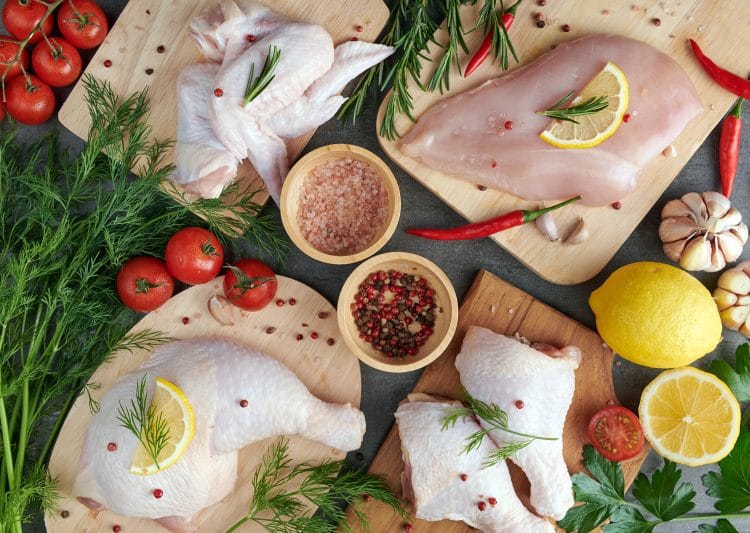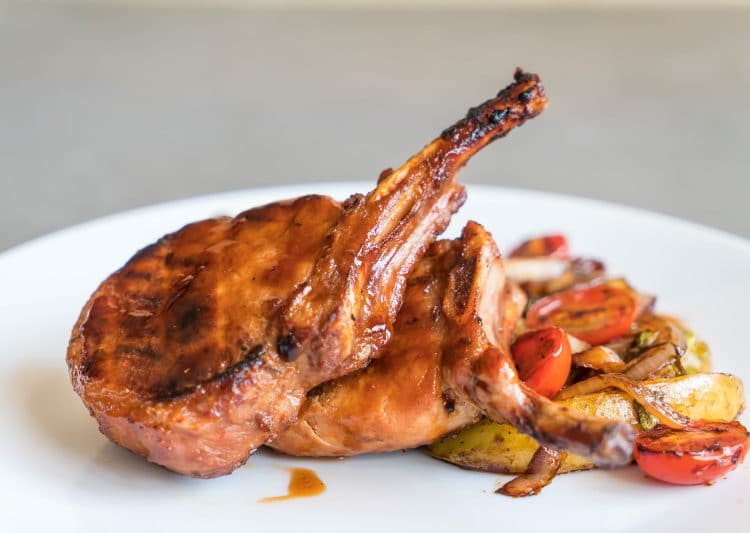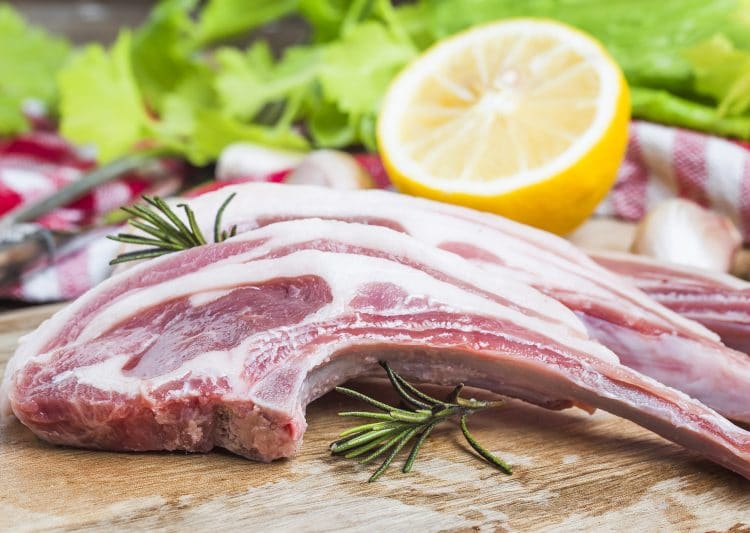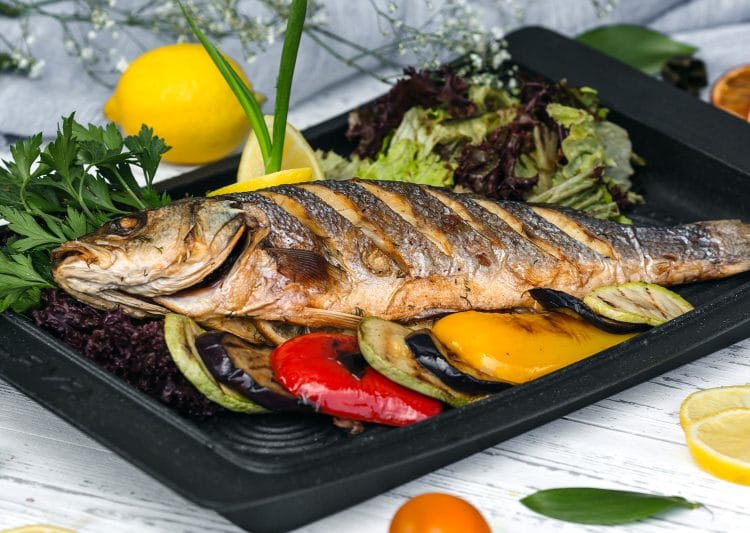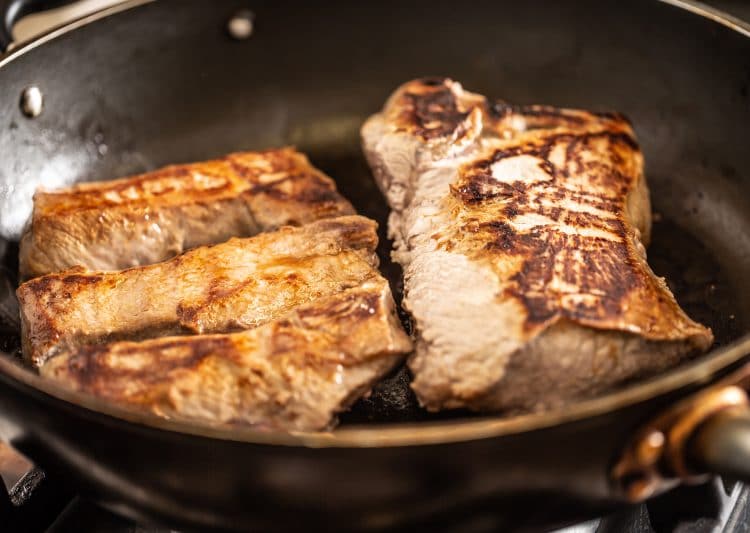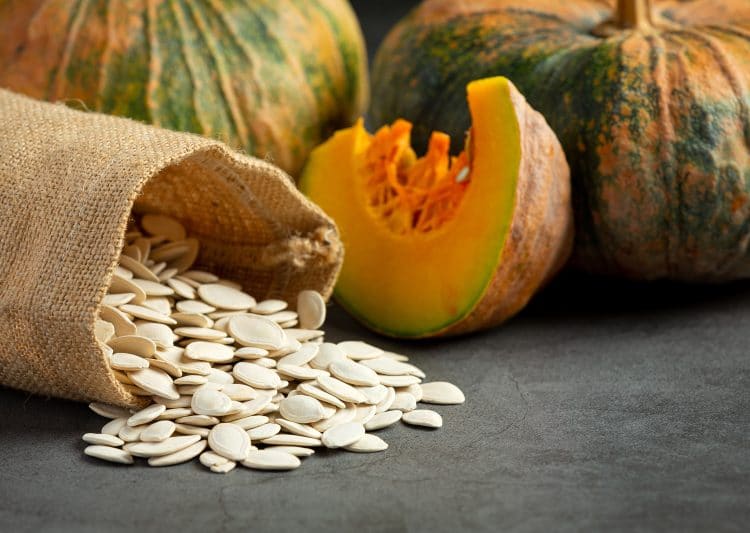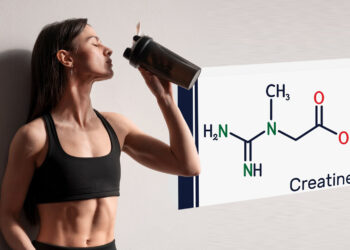Creatine can be naturally produced by your body, but we often need to consume dietary sources of creatine to meet the daily recommendations. Have you been wondering what foods are high in creatine? Then this article is for you! Seven foods are naturally rich in creatine. Read on to learn about creatine, dietary creatine, and creatine synthesis.
What is Creatine?
Creatine is an amino acid derivative, meaning that it is naturally produced in the body, but it is not an essential nutrient [3]. It is synthesized naturally by the kidneys and liver from three amino acids: glycine, arginine, and methionine [1, 2]. Creatine is also present in animal food products such as meats and dairy products, which can be consumed as a source of dietary creatine [2].
Creatine aids the human body in several processes. It can regulate cell and organ function and metabolic regulation [3]. Creatine also provides energy to the brain, myocardium, and skeletal muscle [3]. Studies show that creatine can increase muscle strength and mass and reduce muscle fatigue [3, 4]. Creatine also promotes muscle gain through the process of drawing water into muscles [5]. This process also improves performance and promotes recovery [5].
Approximately 95% of creatine stored in the body is stored in skeletal muscle. The remaining 5% of creatine in the body is stored in the brain [4]. Every day, 1.5 to 2% of the stored creatine is converted for use by the liver, kidneys, and pancreas [4].
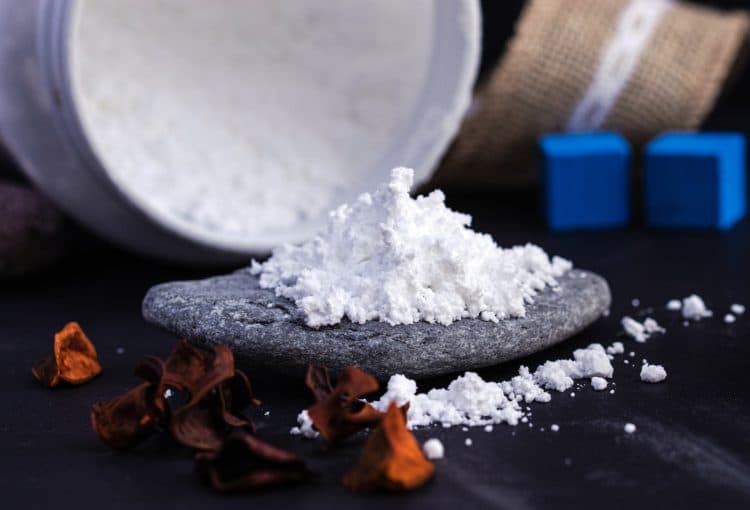
How is Creatine Used?
Without getting deep into the science of how creatine works, here is a basic overview. Muscles need energy to function. ATP is the body’s energy source that muscles use to contract. When a muscle uses the energy from ATP, the ATP molecule is broken down into ADP [8]. High-intensity exercise, such as resistance training, causes ATP to be used very quickly, which onsets muscle fatigue [8]. Creatine is then used to resynthesize ADP back into ATP for re-use [8]. Thus, reducing muscle fatigue.
Level Up Your Fitness: Join our 💪 strong community in Fitness Volt Newsletter. Get daily inspiration, expert-backed workouts, nutrition tips, the latest in strength sports, and the support you need to reach your goals. Subscribe for free!
When creatine is used, the stored amounts of creatine in the body need to be replenished either through synthesis or diet. About half of creatine replenishment is from synthesized creatine [8]. To fully replenish the amount of created used by the body, creatine must be consumed [2].
Creatine Dietary Needs
The average adult needs between 1 to 3 grams of creatine stored in their body for functioning, whether the creatine is synthesized or from dietary sources [5]. Athletes require larger amounts. The International Society of Sports Nutrition suggests that athletes consume between 5 and 10 grams of creatine each day to maintain their body’s creatine stores [5]. You can calculate how much creatine you need to consume by using this calculator.
7 Foods High in Creatine
1. Beef
Beef, referred to as red meat, is the meat of cattle.
Beef is an excellent food source of protein, amino acids, and creatine, making it one of the best foods for building muscle and improving exercise performance [12]. Since beef is a rich source of heme iron, beef can also prevent the development of anemia. Anemia is an iron deficiency that causes you to feel tired and weak [12].
Beef nutrition facts: 3.5oz serving of broiled ground beef (10% fat) [12]
- Calories: 217
- Protein: 26.1g
- Fat: 11.8g
Beef contains the highest quality of protein and amino acids that you can consume. It is also rich in vitamins and minerals such as vitamin B6, vitamin B12, zinc, selenium, iron, niacin, phosphorus, and bioactive substances such as taurine and glutathione [12].
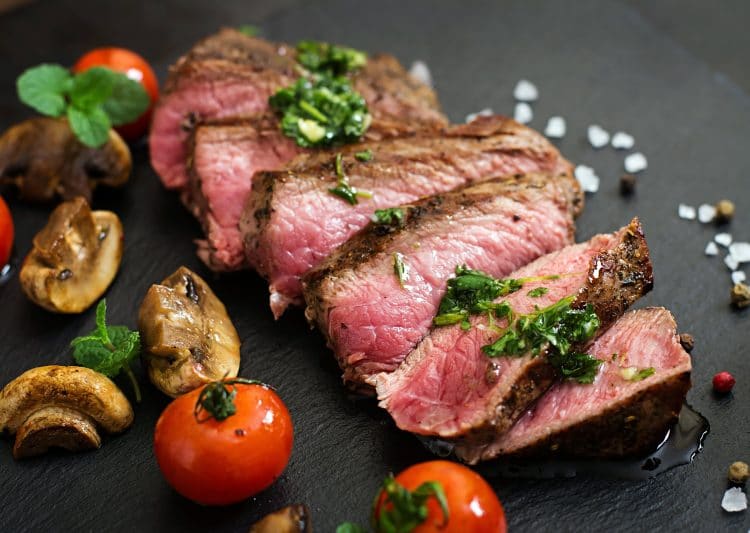
Creatine in Beef
Beef contains the highest amount of dietary creatine compared to other foods. Beef cuts contain an average of 4.5 grams of creatine per kilogram of meat [8]. The amount of creatine in beef varies by muscle or organ.
- Steak – contains 5 grams of creatine per kilogram of meat [7].
- Top Loin – contains 2.93 grams of creatine per kilogram of meat [6].
- Round Tip – contains 2.95 grams of creatine per kilogram of meat [6].
- Ground Beef – contains 2.53 grams of creatine per kilogram of meat [6].
2. Poultry
Poultry is a term that refers to domesticated fowl that are raised for meat and egg production, such as chickens, turkeys, geese, and ducks [13]. Chicken is the most commonly consumed meat in the United States [13].
Chicken nutrition facts: 4oz serving of boneless, skinless, chicken breast [15]
- Calories: 136
- Protein: 25.4g
- Fat: 2.96g
Poultry is high in protein and contains all nine essential amino acids [13]. It also contains notable amounts of vitamin B6, vitamin B12, selenium, phosphorus, thiamin, riboflavin, and niacin [13].
Creatine in Chicken
Creatine content in poultry varies by bird and portion of meat.
- Chicken Breast – contains 2.21 grams of creatine per kilogram of meat [6].
- Chicken Thigh – contains 2.51 grams of creatine per kilogram of meat [6].
Turkey and Cornish hens are also mentioned to be excellent sources of creatine. However, the exact amount of creatine from those sources is unknown.
3. Pork
Pork is meat from pigs. Pork meat is the most consumed meat in the world [14].
Like other meats, pork is also an excellent source of protein and all nine essential amino acids [13]. As it is a high-quality protein, it also promotes the benefits of increasing muscle mass and improving performance [14].
Pork nutrition facts: 3.5oz serving of ground pork [14]
- Calories: 297
- Protein: 25.7g
- Fat: 20.8g
It is also a rich source of thiamine, selenium, zinc, phosphorus, iron, Vitamin B6, vitamin B12, and Niacin [14].
Creatine in Pork
Pork contains an average of about 5.0 grams per kilogram of pork meat [8]. The exact content of creatine in pork varies by the cut of meat.
- Top Loin – contains 1.88 grams of creatine per kilogram of meat [6].
- Ground Pork – contains 1.79 grams of creatine per kilogram of meat [6].
- Bacon – contains 1.23 grams of creatine per kilogram of meat [6].
Dry-cured ham, pork heart, and pork liver are also mentioned as excellent sources of creatine. However, the exact value of creatine in those meat selections is unknown.
4. Sheep
Sheep meat is also considered red meat, which like beef, is rich in heme iron [16].
Level Up Your Fitness: Join our 💪 strong community in Fitness Volt Newsletter. Get daily inspiration, expert-backed workouts, nutrition tips, the latest in strength sports, and the support you need to reach your goals. Subscribe for free!
Sheep meats are classified into two types, lamb and mutton. Lamb meat comes from sheep slaughtered before 12 months of age, and mutton meat comes from sheep slaughtered after 24 months of age [16]. Lamb is generally much more tender meat than mutton.
Lamb nutrition facts: 3.5oz serving of roasted lamb meat [17]
- Calories: 258
- Protein: 25.6g
- Fat: 16.5g
Lamb and mutton are high in protein and contain all nine essential amino acids [17]. They are also rich in vitamins and minerals such as iron, phosphorus, niacin, vitamin B12, selenium, and zinc, and bioactive nutrients such as creatine, taurine, and glutathione [17].
Creatine in Lamb and Mutton
The exact amount of creatine in lamb and mutton is unknown. But, as it is red meat like beef, the content of creatine is expected to be approximately 4.5 to 5 grams per kilogram of uncooked meat.
5. Fish
Some fish varieties are excellent sources of creatine. Fish is an excellent source of protein, omega-3 fatty acids, thiamine, selenium, vitamin D, and creatine [19].
Salmon nutrition facts: 3.5oz serving of cooked wild salmon [18]
- Calories: 182
- Protein: 25g
- Fat: 8g
Tilapia nutrition facts: 3.5oz serving of cooked tilapia [20]
- Calories: 182
- Protein: 26g
- Fat: 3g
Catfish nutrition facts: 3oz serving of cooked catfish [29]
- Calories: 89.2
- Protein: 15.7g
- Fat: 2.4g
Cod nutrition facts: 3oz serving of cooked cod [30]
- Calories: 71.4
- Protein: 17.3g
- Fat: 0.2g
Creatine in Fish
Creatine content in fish varies by the variety of fish.
- Salmon – contains 2.66 to 4.5 grams of creatine per kilogram of meat depending on if it is farmed or wild salmon [6, 8].
- Herring – contains 6.5 to 10 grams of creatine per kilogram of meat [8].
- Cod – contains 3 grams of creatine per kilogram of meat [8].
- Catfish – contains 2.81 grams of creatine per kilogram of meat [6].
- Tilapia – contains 1.80 grams of creatine per kilogram of meat [6].
- Tuna – contains 4.0 grams of creatine per kilogram of meat [8].
6. Wild Game
Wild game meat is classified as any meat that is undomesticated and wild instead of farm raised. Venison (elk or deer), bison, and rabbit are the most commonly consumed game meats.
Both venison and bison are rich in protein, iron, zinc, selenium, and B vitamins [22].
Venison nutrition facts: 3 oz serving of cooked venison [21]
- Calories: 159
- Protein: 22.5g
- Fat: 7g
Bison nutrition facts: 4 oz serving of cooked bison [22]
- Calories: 124
- Protein: 17g
- Fat: 6g
Creatine in Wild Game Meat
The exact amount of creatine in wild game meats has not been calculated, but since they are red meats, it is safe to assume, in comparison to beef, that they contain a sufficient amount.
7. Dairy
Milk itself is a poor supply of creatine, only containing 0.1 grams per kilogram of milk [8]. However, various cheeses are excellent sources of creatine. Cheese can be an excellent dietary source of creatine if you are vegetarian and do not eat meat products.
While the exact amount of creatine in cheese has not been clinically calculated, cheeses like parmesan, Romano, gruyere, swiss, edam, and gouda are estimated to contain between 2 to 3 grams of creatine per 100 grams of cheese.
[Related: Best Creatine Supplements of 2024 Reviewed & Ranked]
Important Notes
It is important to note that the creatine amounts measured in most meats are measured when the meat is raw (2). When meat is cooked, it can lose up to 30% of its creatine content, especially through the lost liquid during the cooking process (2). Overcooking can also completely destroy creatine in meats, especially in steak (8).
Another important consideration is that the measurements of creatine containment in meat are in grams of creatine per kilogram of meat. One kilogram of meat equals 35.274 ounces of meat. This is well over the weekly serving guidelines for protein consumption. The USDA recommends 26 ounces of protein per week from meat and poultry and 8 ounces of protein from fish per week (22).
What About Creatine for Vegans?
Animal meats and animal products are the only sources of dietary creatine. Vegans often find it difficult to find sources of dietary creatine and need to rely on creatine supplementation. Studies show that those who do not eat meat have less creatine in their muscles than those who eat meat [2].
Creatine Synthesis
The good news is that the human body can synthesize enough creatine for normal body functions [2]. If vegans want to build muscle or reduce fatigue during high-intensity workouts, they often need creatine supplements. However, there is food that can be consumed in order to support creatine synthesis [2].
For vegans, creatine replenishing is entirely dependent on creatine synthesis [24]. Creatine is synthesized from three amino acids: arginine, glycine, and methionine [2]. Consuming foods high in these amino acids can support creatine synthesis for vegans.
Foods High in Arginine, Glycine, and Methionine
- Pumpkin Seeds – contain 6.9 grams of arginine per cup of seeds, 2.8 grams of glycine, and 0.8 grams of methionine per cup of seeds [9].
- Sesame Seeds – contain 4.8 grams of arginine, 1.6 grams of glycine, and 1.3 grams of methionine per cup of seeds [10].
- Seaweed (Spirulina) – contain 4.6 grams of arginine, 3.5 grams of glycine, and 1.3 grams of methionine per cup [11].
- Soy Beans – contain 2.9 grams of arginine, 1.7 grams of glycine, and 0.5 grams of methionine per cup [25].
- White Beans – contain 1.2 grams of arginine, 0.7 grams of glycine, and 0.2 grams of methionine per cup [26].
- Walnuts – contain 2.7 grams of arginine, 1.0 grams of glycine, and 0.3 grams of methionine per cup [27].
- Almonds – contain 3.5 grams of arginine, 2.1 grams of glycine, and 0.2 grams of methionine per cup [28].
Learn more about Creatine:
- The 5 Supplements Worth Taking (And Another Five That Aren’t)
- Creatine Before and After: How Creatine Supplement Affects Your Body
- I’m a Supplement Researcher — These 3 Creatine Forms Will Supercharge Your Gains (and One’s a Total Rip-Off)
- Creatine and Acne: Are You Making This Common Mistake?
- STOP Wasting Your Creatine! The Ultimate Guide to Proper Usage
- How Long Does Creatine Stay in Your System? A Doctor Explains
- What Happens To Your Body When You Take Creatine Every Day For Muscle Gain?
- Creatine + Whey Synergy: The Science Behind This Power Duo’s Muscle-Building Magic
FAQs
What food has the most creatine?
Red meat contains the highest amount of creatine. There are approximately 4 to 5 grams of creatine per serving of red meat.
What foods are creatine naturally in?
Creatine is naturally found in animal products, such as meats, poultry, seafood, and cheese.
Are eggs high in creatine?
While eggs may appear to be a source of creatine since they are an animal product and they are high in protein, they do not contain any creatine.
Do nuts have creatine?
Nuts do not contain creatine. But, they do contain the amino acids that are necessary for creatine synthesis: arginine, glycine, and methionine.
Does milk have creatine?
Milk only contains 0.1 grams of creatine per kilogram of milk. It is not a sufficient dietary source of creatine [8].
Wrapping Up
Creatine is naturally found in animal meats, with the highest concentration of creatine being in red meats and fish. Even though it may be possible to consume enough creatine in your diet, if you engage in strenuous or high-intensity exercise, consuming creatine through these meats may not meet your body’s needs. Supplementation would likely be necessary.
Since creatine is only found in animal products, vegans are often left lacking dietary creatine options. While they can consume foods that are high in arginine, glycine, and methionine to support creatine synthesis in the body, supplementation would be necessary to replenish the body’s creatine storage.
References
- Greenhaff, P. L. (1997). The nutritional biochemistry of creatine. The Journal of Nutritional Biochemistry, 8(11), 610–618. https://doi.org/10.1016/s0955-2863(97)00116-2
- Brosnan, M. E., & Brosnan, J. T. (2016). The role of dietary creatine. Amino Acids, 48(8), 1785–1791. https://doi.org/10.1007/s00726-016-2188-1
- Ostojic, S. M. (2021). Dietary creatine intake in U.S. population: NHANES 2017–2018. Nutrition, 87–88, 111207. https://doi.org/10.1016/j.nut.2021.111207
- Cooper, R., Naclerio, F., Allgrove, J., & Jimenez, A. (2012). Creatine supplementation with specific view to exercise/sports performance: an update. Journal of the International Society of Sports Nutrition, 9(1). https://doi.org/10.1186/1550-2783-9-33
- Kreider, R. B., Kalman, D. S., Antonio, J., Ziegenfuss, T. N., Wildman, R., Collins, R., Candow, D. G., Kleiner, S. M., Almada, A. L., & Lopez, H. L. (2017). International Society of Sports Nutrition position stand: safety and efficacy of creatine supplementation in exercise, sport, and medicine. Journal of the International Society of Sports Nutrition, 14(1). https://doi.org/10.1186/s12970-017-0173-z
- Puangsombat, K., Gadgil, P., Houser, T. A., Hunt, M. C., & Smith, J. S. (2012). Occurrence of heterocyclic amines in cooked meat products. Meat Science, 90(3), 739–746. https://doi.org/10.1016/j.meatsci.2011.11.005
- Wu, G. (2020). Important roles of dietary taurine, creatine, carnosine, anserine and 4-hydroxyproline in human nutrition and health. Amino Acids, 52(3), 329–360. https://doi.org/10.1007/s00726-020-02823-6
- Rasmussen, C. J. (2008). Nutritional Supplements for Endurance Athletes. Nutritional Supplements in Sports and Exercise, 369–407. https://doi.org/10.1007/978-1-59745-231-1_11
- (2019). FoodData Central – Pumpkin Seeds. FoodData Central. https://fdc.nal.usda.gov/fdc-app.html#/food-details/170556/nutrients
- (2019). FoodData Central – Sesame Seeds. FoodData Central. https://fdc.nal.usda.gov/fdc-app.html#/food-details/169412/nutrients
- (2019). FoodData Central – Seaweed, Spirulina. FoodData Central https://fdc.nal.usda.gov/fdc-app.html#/food-details/170495/nutrients
- Arnarson, A., PhD. (2019, April 4). Beef 101: Nutrition Facts and Health Effects. Healthline. https://www.healthline.com/nutrition/foods/beef
- Colorado State University. (2022, March 10). Poultry | Food Source Information. CSU. https://fsi.colostate.edu/poultry/
- Arnarson, A., PhD. (2019a, March 28). Pork 101: Nutrition Facts and Health Effects. Healthline. https://www.healthline.com/nutrition/foods/pork
- (2019). FoodData Central – Chicken, breast, raw. FoodData Central https://fdc.nal.usda.gov/fdc-app.html#/food-details/171077/nutrients
- Ponnampalam, E., Holman, B., & Scollan, N. (2016). Sheep: Meat. Encyclopedia of Food and Health, 750–757. https://doi.org/10.1016/b978-0-12-384947-2.00620-6
- Arnarson, A., PhD. (2019, March 26). Lamb 101: Nutrition Facts and Health Effects. Healthline. https://www.healthline.com/nutrition/foods/lamb#nutrition
- Spritzler, F. (2022, March 29). Salmon Nutrition and Health Benefits. Healthline. https://www.healthline.com/nutrition/salmon-nutrition-and-health-benefits#1
- Link, M. R. S. (2019, September 16). Is Fish Meat? All You Need to Know. Healthline. https://www.healthline.com/nutrition/is-fish-meat#health-effects
- Pearson, K., PhD. (2017, October 11). Tilapia Fish: Benefits and Dangers. Healthline. https://www.healthline.com/nutrition/tilapia-fish#TOC_TITLE_HDR_3
- Link, M. R. S. (2021, October 27). Is Venison High in Cholesterol? All You Need to Know. Healthline. https://www.healthline.com/nutrition/is-venison-high-in-cholesterol
- Preiato, R. D. D. (2020, January 10). All You Need to Know About Bison Meat. Healthline. https://www.healthline.com/nutrition/bison-meat-nutrition#nutrition
- S. Department of Agriculture and U.S. Department of Health and Human Services. Dietary Guidelines for Americans, 2020-2025. 9th Edition. December 2020. Available at https://www.dietaryguidelines.gov/sites/default/files/2020-12/Dietary_Guidelines_for_Americans_2020-2025.pdf
- Pohl, A. (2021). The Impact of Vegan and Vegetarian Diets on Physical Performance and Molecular Signaling in Skeletal Muscle. MDPI. https://www.mdpi.com/2072-6643/13/11/3884
- (2019). FoodData Central – Soy Beans. FoodData Central https://fdc.nal.usda.gov/fdc-app.html#/food-details/172441/nutrients
- (2019). FoodData Central – White Beans. FoodData Central https://fdc.nal.usda.gov/fdc-app.html#/food-details/175204/nutrients
- (2019). FoodData Central – Walnuts. FoodData Central https://fdc.nal.usda.gov/fdc-app.html#/food-details/170187/nutrients
- (2019). FoodData Central – Almonds. FoodData Central https://fdc.nal.usda.gov/fdc-app.html#/food-details/170567/nutrients
- (2019). FoodData Central – Catfish. FoodData Central https://fdc.nal.usda.gov/fdc-app.html#/food-details/173714/nutrients
- (2019). FoodData Central – Cod. FoodData Central https://fdc.nal.usda.gov/fdc-app.html#/food-details/175178/nutrients

